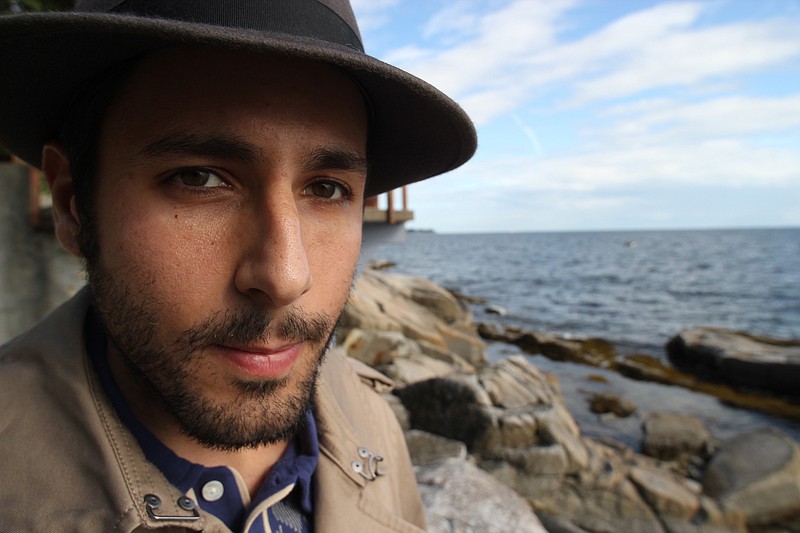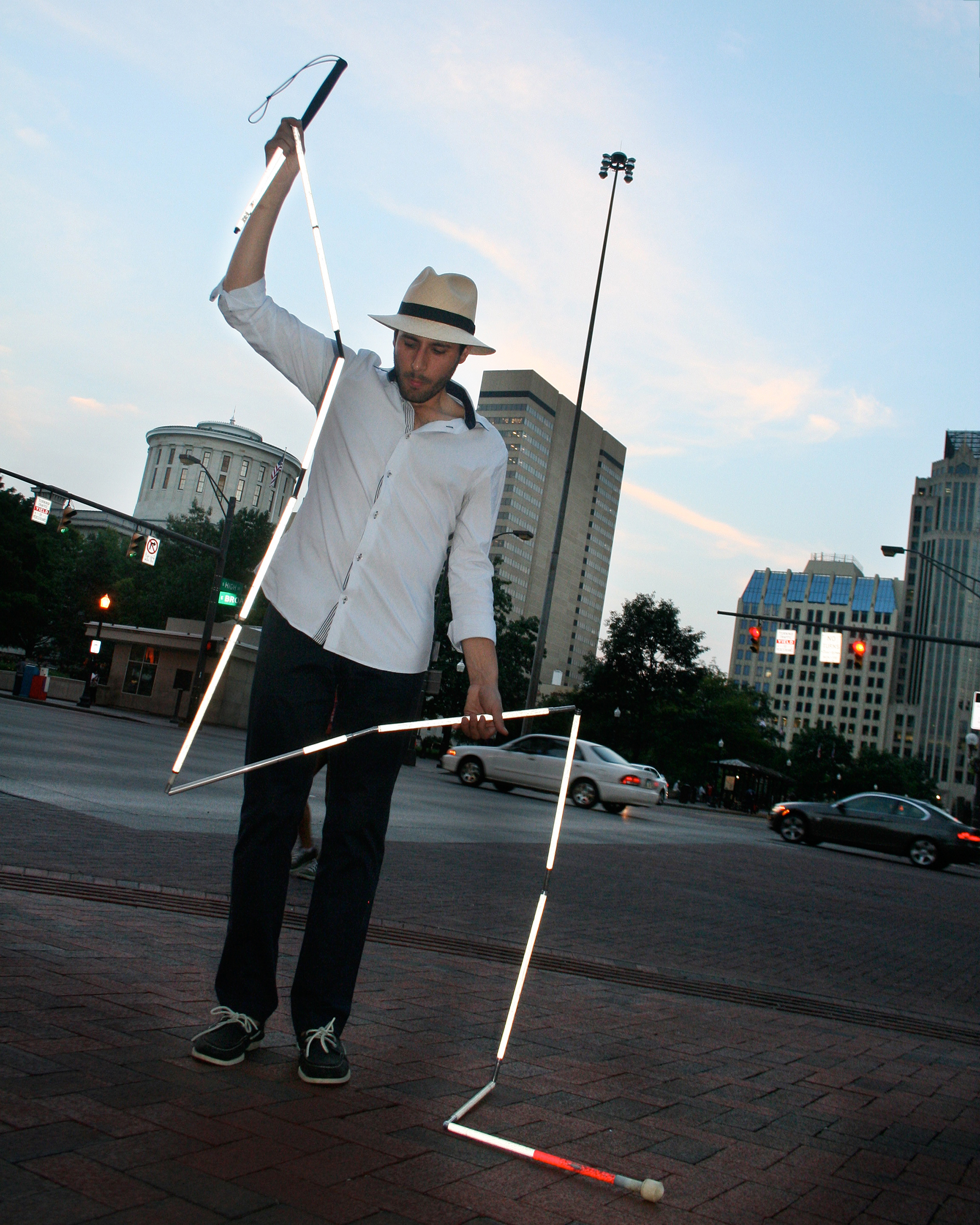If you go
› What: “How to Close Your Eyes,” featuring Diane Marek Visiting Artist Carmen Papalia › When: Oct. 27-Dec. 8› Where: Cress Gallery, UTC Fine Arts Center, 752 Vine St. › Hours: 9:30 a.m.-7:30 p.m. Monday through Friday, 1-4 p.m. Saturday and Sunday› Admission: Free› Phone: 304-9789› Website: www.cressgallery.org/exhibition-item/carmen-papalia
Additional events
* Oct. 27 — Lecture by Carmen Papalia, 5:30 p.m. in Room 101, Derthick Hall, 624 Vine St. (post-lecture reception in Fine Arts Center lobby, 752 Vine St.)* Oct. 28 — Carmen Papalia leads UTC students on blind walking tour, 11 a.m.-1:40 p.m., UTC Campus, 615 McCallie Ave.
Consider how fundamental vision is to the typical museum or art gallery visit. Every component of the experience, from the collection to the signage, is designed for the sighted guest.
Enter legally blind Canadian artist and "non-visual learner" Carmen Papalia. He has actively worked to dispel this visual bias as an entry point to art by masterminding experiential pieces designed to turn the tables on sight.
The Vancouver, British Columbia, native's past projects include "Mobility Device," in which he collaborated with a marching band to explore Santa Ana, Calif., using predetermined musical cues to avoid obstacles and "see" his surroundings. During another piece, "White Cane Amplified," Papalia replaced his regular walking cane with a megaphone, through which he announced his impairment and requested help navigating a downtown environment.
Through such projects, "I came to realize my way of being in the world as a mode of orientation that has the potential to uncover entire unseen bodies of knowledge," Papalia wrote in Art21 magazine. "This inspired me to consider everything from how cultures might have evolved if the origins of communication had centered on the tactile sense to what a typical museum experience for the nonvisual learner might be."
From Oct. 27 to Dec. 8, Papalia's work will be featured in "How to Close Your Eyes," an exhibition at the Cress Gallery on the University of Tennessee at Chattanooga campus as part of the Diane Marek Series. Now in its 10th year, the series is designed to host mini-residencies by artists that include on-campus interactions with students as well as lectures and other events that are open to the public.
Hopefully, says Cress Gallery Curator and Director Ruth Grover, students and visitors to Papalia's show will come to a wider, more-encompassing understanding of the arts and the artist-audience conversation.
"Art is a means to enlarge perception and thought," she says. "This exhibition is certainly going to aim towards that goal. It's a very different approach, and it's very exciting."
Papalia's selection for the series reflects a growing sentiment in the academic community that the definition of the arts is too limited, says Ron Buffington, the head of the Department of Art at UTC.
"He challenges some of the ideas we have about what art is," he says. "In that way, some of those challenges are the very ones that we're talking with our students about and that our students are beginning to participate in as well - the idea that art has to be this beautiful object that's put up in front of an audience for enjoyment or pleasure or speculation.
"Carmen shows that an artist is someone who works with ideas and who makes meaning happen between artists and audiences, between people."
To a non-sighted guest, Papalia wrote in Art21, the typical experience at an artistic institute is necessarily hamstrung.
"Museums disable me as a viewer," he wrote. "Everything assumes a subject who uses their visual sense as a primary way of knowing, and I am a nonvisual learner who requires a different frame of reference."
During his stay at UTC between Oct. 26 and Oct. 30, Papalia will discuss his work as part of an opening lecture and attend the unveiling of "See For Yourself," a project made in collaboration with a multidisciplinary team of students.
In "See For Yourself," students from a university honors humanities class wrote detailed descriptions of works on display at the Hunter Museum of American Art. These descriptions - absent title, artist name or housing institution - were then given to students in the UTC art department, who used them as their only guide to recreate the works. To add a third layer of interpretation to the mix, audio interpreters from the university's Disability Resource Center then created audio descriptions of the recreated pieces.
All three layers of reinterpretation, as well as the original artwork, will be on display at the Cress Gallery through Dec. 8. The gallery also will display videos of Papalia's "Mobility Device" and "White Cane Amplified," as well as photographs from his "Blind Shuttle Tours," in which sighted participants form a train behind him, willingly close their eyes and rely on his ability to navigate with a walking cane.
Contact Casey Phillips at cphillips@timesfreepress.com or 423-757-6205. Follow him on Twitter at @PhillipsCTFP.

